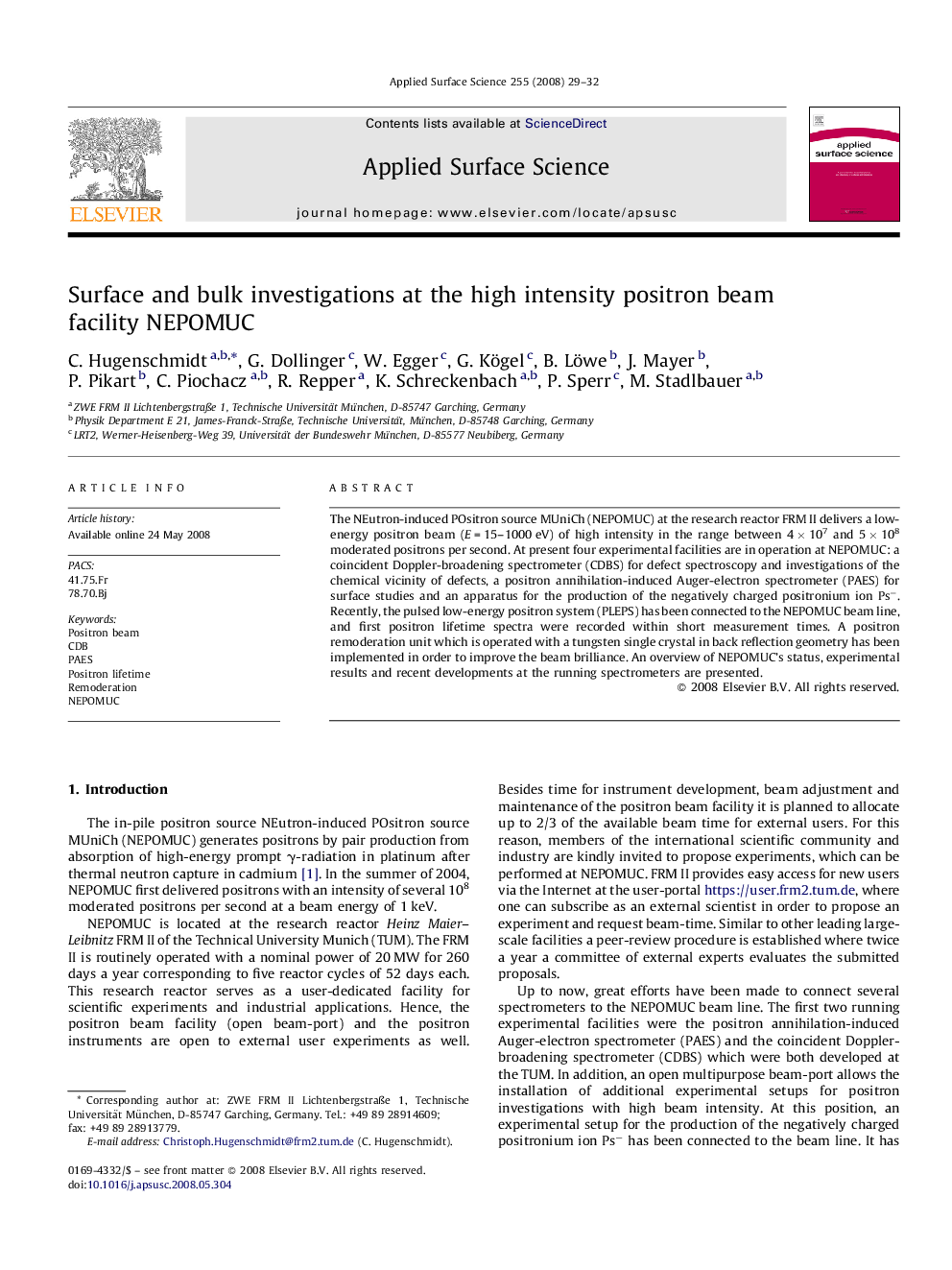| Article ID | Journal | Published Year | Pages | File Type |
|---|---|---|---|---|
| 5365378 | Applied Surface Science | 2008 | 4 Pages |
Abstract
The NEutron-induced POsitron source MUniCh (NEPOMUC) at the research reactor FRM II delivers a low-energy positron beam (EÂ =Â 15-1000Â eV) of high intensity in the range between 4Â ÃÂ 107 and 5Â ÃÂ 108 moderated positrons per second. At present four experimental facilities are in operation at NEPOMUC: a coincident Doppler-broadening spectrometer (CDBS) for defect spectroscopy and investigations of the chemical vicinity of defects, a positron annihilation-induced Auger-electron spectrometer (PAES) for surface studies and an apparatus for the production of the negatively charged positronium ion Psâ. Recently, the pulsed low-energy positron system (PLEPS) has been connected to the NEPOMUC beam line, and first positron lifetime spectra were recorded within short measurement times. A positron remoderation unit which is operated with a tungsten single crystal in back reflection geometry has been implemented in order to improve the beam brilliance. An overview of NEPOMUC's status, experimental results and recent developments at the running spectrometers are presented.
Related Topics
Physical Sciences and Engineering
Chemistry
Physical and Theoretical Chemistry
Authors
C. Hugenschmidt, G. Dollinger, W. Egger, G. Kögel, B. Löwe, J. Mayer, P. Pikart, C. Piochacz, R. Repper, K. Schreckenbach, P. Sperr, M. Stadlbauer,
